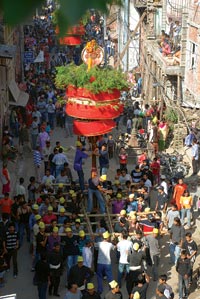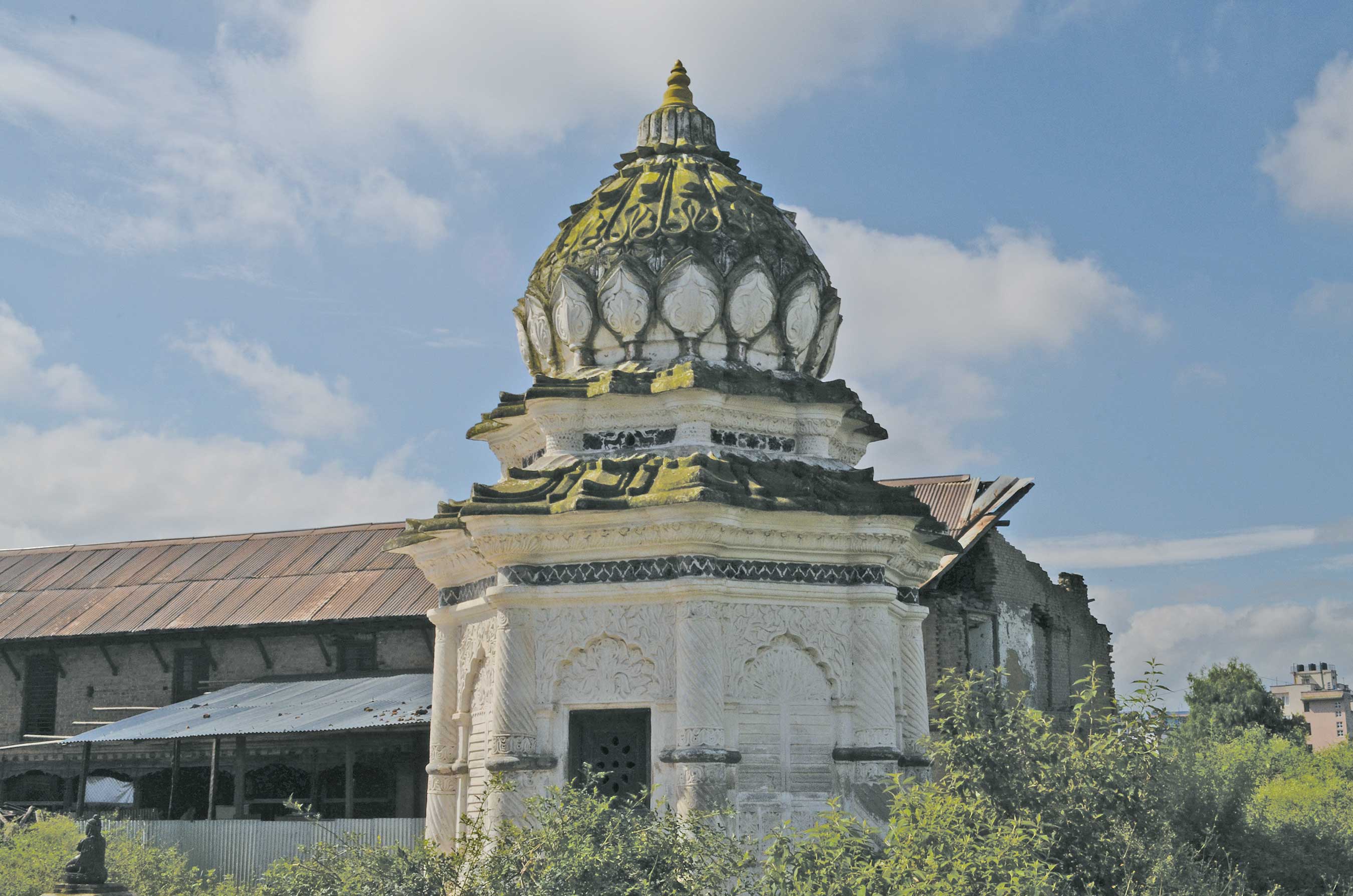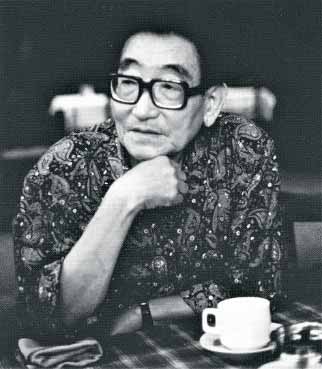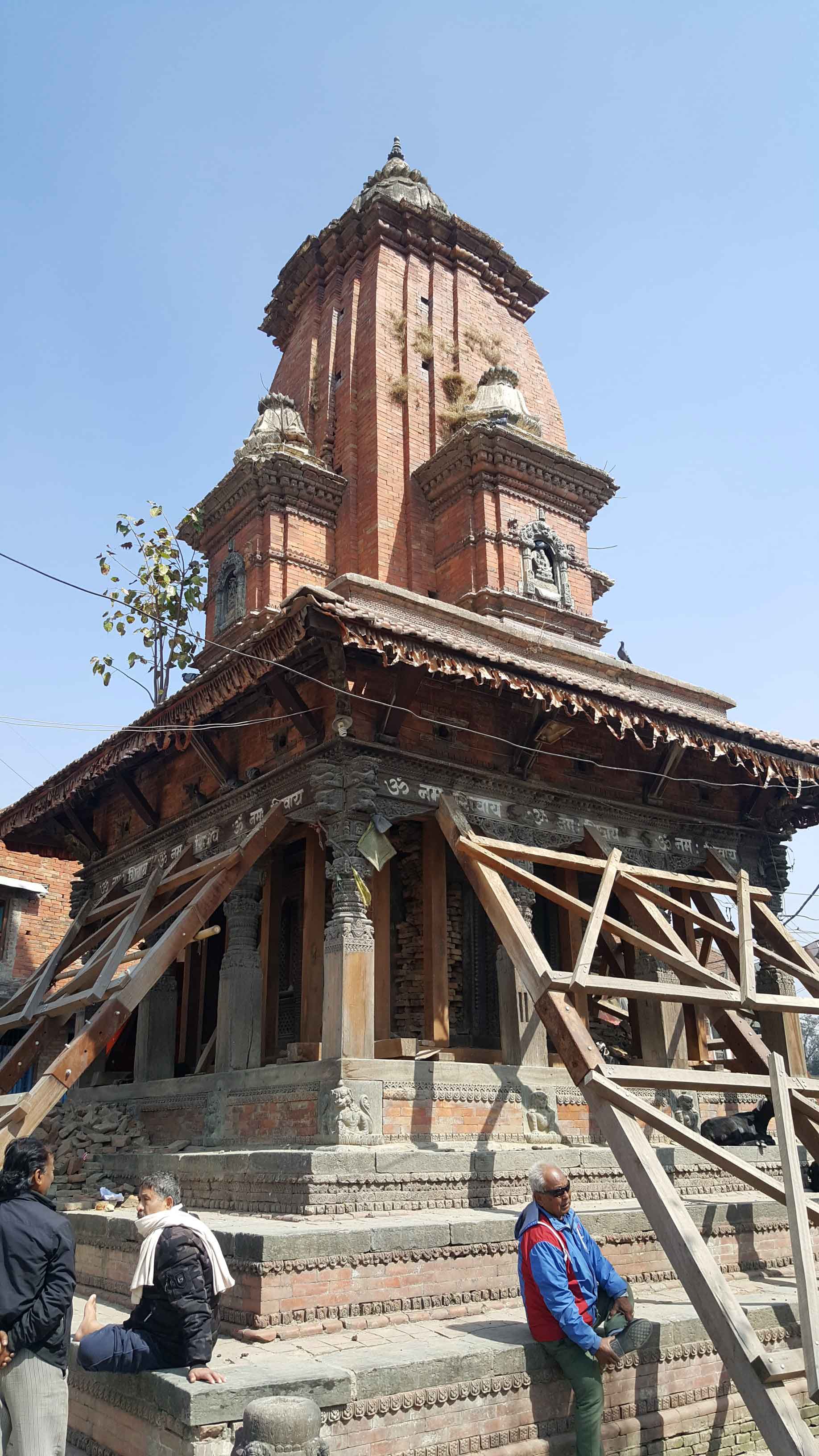With roots in mythology, Hadigaun’s jatra is the identity of the quaint town today.
A very long time back in Hadigaun, a woman in labor pain was calling out her mother’s name when Lord Narayana walked by her in the guise of a human. Hearing the woman, the deity asked her to take Lord Narayana’s name instead. The woman got furious at the stranger’s suggestion and asked him to leave immediately. Narayana felt insulted and went to the Himalayas in fury.
 Twelve years passed by but the woman was unable to give birth and was in great pain. Taking pity on the woman, the villagers decided to find and bring Narayana to Hadigaun and redeem the poor woman. After a long search they found Narayana and asked him to come with them but the deity refused. One of the villagers told Narayana that if he came to town, they would show him a Jatra (carnival) that takes place nowhere else in the world. Hearing this Narayana promised to visit the town during the occasion.
Twelve years passed by but the woman was unable to give birth and was in great pain. Taking pity on the woman, the villagers decided to find and bring Narayana to Hadigaun and redeem the poor woman. After a long search they found Narayana and asked him to come with them but the deity refused. One of the villagers told Narayana that if he came to town, they would show him a Jatra (carnival) that takes place nowhere else in the world. Hearing this Narayana promised to visit the town during the occasion.
Hadigaun villagers indeed put up a jatra that takes place nowhere else, which today has become the identity of the place. The story is the premise for the popular Nepali saying - kahi nabhaeko jatra Hadigaun ma (A jatra that takes place only in Hadigaun). Narayana was very pleased with the Jatra and forgave the woman following which she was able to give birth to a baby boy born with a mustache (owing to his long stay in his mother’s womb). Since that incident, the villagers claim the carnival has been taking place each year to appease Lord Narayana.
The preparations for the jatra start with the making of wax flowers by the family of the priest on the second day of Dasain. These wax flowers are a must for the jatra. Then flowers and other offerings are brought from Shivapuri and offered to the deity’s idols from the priests’ home and placed on the top of the khut (chariot).As opposed to other jatras, khuts used in this jatra are saucer shaped with the idols at the top and the gajur (spire) at the bottom. Another unique feature of this jatra is that it takes place at night (on the last night of Dasain) and ends the same night too. Three khuts are taken out from Kotal tole, Nyalma tole and Bhimsen tole respectively and the puja is performed on them by the priests. These khuts then circle Hadigaun three times. The khuts represents Brahma, Vishnu and Maheswora but some believe it also represents the woman cursed and later redeemed by Vishnu, her child and her husband. While the khuts are circling Hadigaun, each khut itself is rotated by a man sitting at its base in a clockwise direction. These rounds are believed to bring protection and prosperity to the inhabitants. After the completion of the rounds, the khuts are left on the street, for worshippers to pay their homage and gradually dismantled to be set again next year. The whole of Hadigaun participates whole heartedly as fun, frolicking, drinking and eating goes on throughout the festival.
Although Hadigaun is known for this jatra, it hosts a lot of other unique jatras like Gahana Khojne jatra, Ropai jatra, Rath Dubaune jatra, Bhatey jatra and Krishna jatra. These jatras and other festivities with the myths and rituals attached with them make Hadigaun itself a place like no other.











